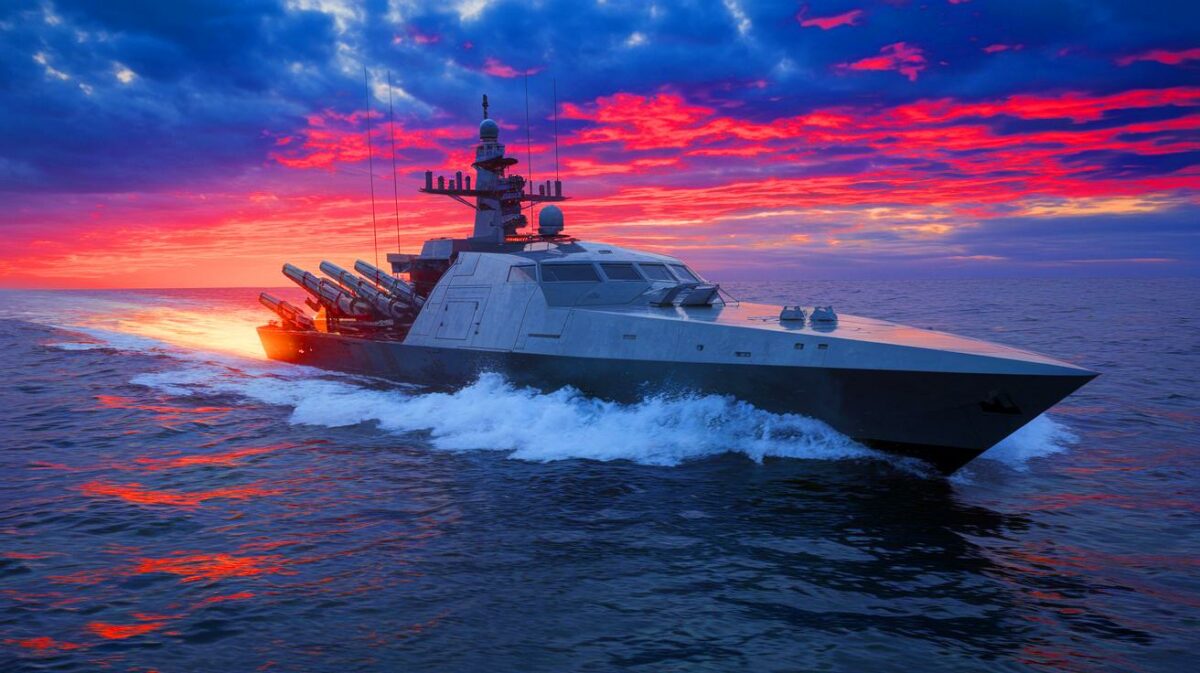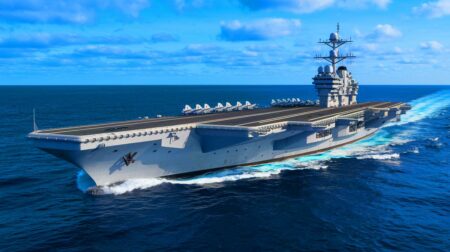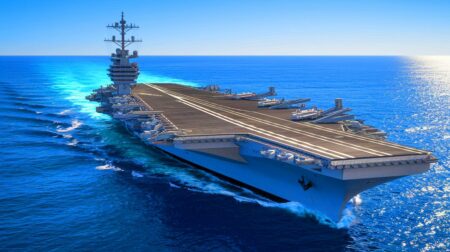| IN A NUTSHELL |
|
The unveiling of the AIRCAT Bengal MC represents a monumental shift in naval warfare technology. Developed by the Delaware-based Eureka Naval Craft, in collaboration with Australian marine autonomy specialist Greenroom Robotics, this warship is being hailed as the most advanced autonomous naval vessel ever created. The Bengal MC is poised to transform military operations with its cutting-edge design and capabilities. By offering a balance between cost-effectiveness and advanced military prowess, this vessel could redefine how naval forces operate globally. But what makes this vessel truly revolutionary, and how does it stand to change the landscape of naval warfare?
Transforming Attack Operations with Unmatched Capabilities
The AIRCAT Bengal MC stands out with its extraordinary ability to carry a 44-ton payload, equivalent to two 40-foot ISO containers. With a top speed exceeding 57 mph, depending on payload, and a range of 1,000 nautical miles, the vessel offers unparalleled operational flexibility. This capability allows the Bengal MC to serve multiple roles, from attack operations to logistical support. The vessel is designed to operate in both crewed and uncrewed modes, enhancing its versatility and strategic value. It is expected to be a significant asset for the US Navy, US Marine Corps, and allied navies, including AUKUS and NATO countries, along with nations like Singapore, Japan, and South Korea.
The Bengal MC’s ability to launch Tomahawk cruise missiles and Naval Strike Missiles (NSM) further cements its position as a formidable force multiplier. This high-tech vessel reduces the reliance on larger, more expensive warships, offering a more efficient platform for missile deployment. By integrating advanced technology with strategic capabilities, the Bengal MC not only enhances military readiness but also offers a cost-effective solution for modern naval warfare.
Revolutionizing Naval Warfare with Cruise Missile Launch Capabilities
The capability to launch Tomahawk cruise missiles and NSMs positions the AIRCAT Bengal MC as a game-changer in naval warfare. These advanced missiles provide a significant tactical advantage, allowing precise and long-range targeting. The vessel’s design reduces the need for larger warships, which are typically required to carry and launch such powerful weaponry. This shift not only decreases operational costs but also enhances strategic flexibility.
According to Bo Jardine, CEO of Eureka Naval Craft, the naval market requires innovation, and the Bengal MC delivers just that. The vessel’s speed and payload capacity enable rapid deployment and increased lethality, making it a vital asset in modern naval operations. By offering a faster, more heavily armed alternative, the Bengal MC meets the evolving demands of naval warfare, addressing concerns around outdated and sluggish vessels.

Unmatched Fuel Efficiency and Operational Versatility
Beyond its combat capabilities, the AIRCAT Bengal MC offers superior fuel efficiency and lower operational costs, making it an attractive option for budget-conscious navies. Its design allows for a wide range of applications, from troop transport to electronic warfare. The vessel can also serve as a drone mothership, supporting unmanned operations and mine warfare.
Greenroom Robotics’ contribution to the vessel’s advanced autonomous navigation system is noteworthy. The Bengal MC is expected to have the most sophisticated autonomous navigation technology available, thanks to the proven Greenroom Advanced Maritime Autonomy (GAMA) Software. This system has been rigorously tested on a 187-foot decommissioned patrol boat, ensuring its reliability and effectiveness. The collaboration between Eureka Naval Craft and Greenroom Robotics promises to deliver a vessel that not only meets but exceeds current naval operational requirements.
Expanding Eureka’s Fleet with Modular Innovation
The Bengal MC joins Eureka’s impressive fleet of AIRCAT vessels, including models like the Lynx and Jaguar, each tailored for specific missions. This modular design philosophy allows clients to customize vessels according to their operational needs, enhancing mission-specific effectiveness. Whether it’s fast attack, reconnaissance, rescue, or high-speed troop transport, Eureka’s fleet is equipped to handle diverse naval challenges.
The vessel’s adaptability underscores its potential to redefine naval operations. With its ability to switch between roles, the Bengal MC can respond to dynamic operational environments, increasing the strategic options available to commanders. This flexibility is crucial in modern warfare, where rapid adaptability can determine mission success.
The AIRCAT Bengal MC represents a revolutionary step in naval technology, promising to reshape how navies operate. Its advanced capabilities, cost-effectiveness, and versatility make it a valuable asset for modern military forces. As the vessel prepares to join the fleets of allied nations, one must ask: How will this technological marvel influence future naval strategies and international maritime dynamics?
Did you like it? 4.6/5 (23)








Wow, 97,000 pounds! That’s like carrying a small building on water! 🚢
How does the fuel efficiency compare to older models?
This new warship sounds impressive, but isn’t it a bit over the top? 🤔
97,000 pounds is quite a payload. What’s it actually going to carry?
Thank you for the detailed article. It’s incredible how far technology has come.
With all these advancements, will there be any human crew on board?
Can it make me a cup of coffee too? ☕ Just kidding, impressive tech!
The AIRCAT Bengal MC sounds like something out of a sci-fi movie!